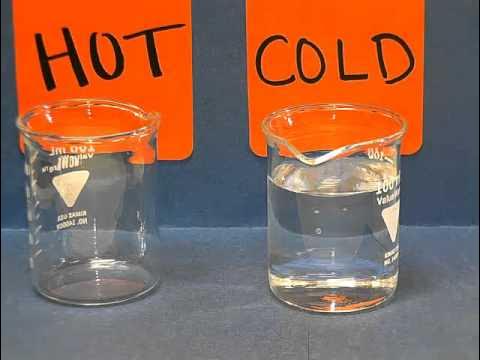Solubility Lab: Salt vs. Sugar
Summary
TLDRIn this educational and engaging video, Haley performs a solubility experiment to compare the dissolution of salt and sugar in water at different temperatures. She explains key concepts like solubility, solute, solvent, and saturation, demonstrating how temperature affects the solubility of salt and sugar. Through the experiment, viewers learn that salt dissolves more easily than sugar, especially in heated water. The video also emphasizes safety precautions while conducting simple experiments. Overall, it’s a fun and informative demonstration of solubility in action!
Takeaways
- 😀 Solubility refers to the rate at which a substance dissolves in a solvent, in this case, water.
- 😀 In a solubility experiment, the solute is the substance being dissolved (sugar or salt), and the solvent is water.
- 😀 Ksp (solubility product constant) is used to measure the solubility of different substances.
- 😀 Safety precautions, such as wearing goggles and rolling up sleeves, are important even for simple experiments.
- 😀 The experiment involves using four cups of water, two at room temperature and two heated, to observe solubility differences.
- 😀 Salt dissolves more readily than sugar in water due to differences in their Ksp values.
- 😀 Heated water increases the solubility of both salt and sugar compared to room temperature water.
- 😀 A saturated solution is reached when no more solute can dissolve, and a supersaturated solution occurs when excess solute remains undissolved.
- 😀 The temperature of water has a noticeable effect on how much solute can dissolve, with heated water allowing more solute to dissolve.
- 😀 In the experiment, salt dissolved more completely and faster than sugar in both room temperature and heated water.
Q & A
What is solubility, and why is it important in this experiment?
-Solubility is the rate at which a substance dissolves in a solvent, in this case, water. It's important because the experiment aims to show how different substances, like salt and sugar, dissolve at different rates, depending on factors such as temperature.
What are the two key components in any solubility experiment?
-In a solubility experiment, the two key components are the solute (the substance that dissolves) and the solvent (the substance that does the dissolving). In this experiment, water is the solvent, and salt and sugar are the solutes.
What does Ksp stand for, and why is it relevant to solubility?
-Ksp stands for the solubility product constant, which measures the solubility of a compound in water. It's relevant because it explains why different substances like salt and sugar have different solubility rates.
What safety precautions should be taken during a solubility experiment?
-Safety precautions include wearing goggles to protect the eyes, pulling back hair to avoid interference, and rolling up sleeves to prevent contamination or accidents while handling materials.
How does temperature affect solubility in this experiment?
-Temperature increases solubility. In this experiment, the heated water allowed both salt and sugar to dissolve more quickly and in greater amounts compared to the room-temperature water.
What is the difference between a saturated and a super-saturated solution?
-A saturated solution occurs when the maximum amount of solute has dissolved in the solvent, while a super-saturated solution happens when additional solute remains undissolved because the solvent can no longer dissolve more solute at the current conditions.
Why does salt dissolve more easily than sugar in the experiment?
-Salt dissolves more easily than sugar because it has a different solubility product constant (Ksp) and typically dissolves more readily in water, especially at higher temperatures.
What does it mean when the water appears cloudy during the experiment?
-When the water appears cloudy, it indicates that the solute (salt or sugar) is not fully dissolved and is suspended in the solvent. This usually happens before reaching saturation or when the solute is unable to dissolve further.
What role does mixing play in the solubility process during the experiment?
-Mixing helps to evenly distribute the solute in the solvent, allowing it to dissolve more effectively. In the experiment, stirring speeds up the process, especially when the solution is nearing saturation.
How does the solubility of sugar in heated water compare to salt in heated water?
-While both salt and sugar dissolve faster in heated water, salt dissolves much more quickly and efficiently than sugar, even when the water is heated. This highlights the difference in their solubility rates.
Outlines

This section is available to paid users only. Please upgrade to access this part.
Upgrade NowMindmap

This section is available to paid users only. Please upgrade to access this part.
Upgrade NowKeywords

This section is available to paid users only. Please upgrade to access this part.
Upgrade NowHighlights

This section is available to paid users only. Please upgrade to access this part.
Upgrade NowTranscripts

This section is available to paid users only. Please upgrade to access this part.
Upgrade NowBrowse More Related Video
5.0 / 5 (0 votes)





